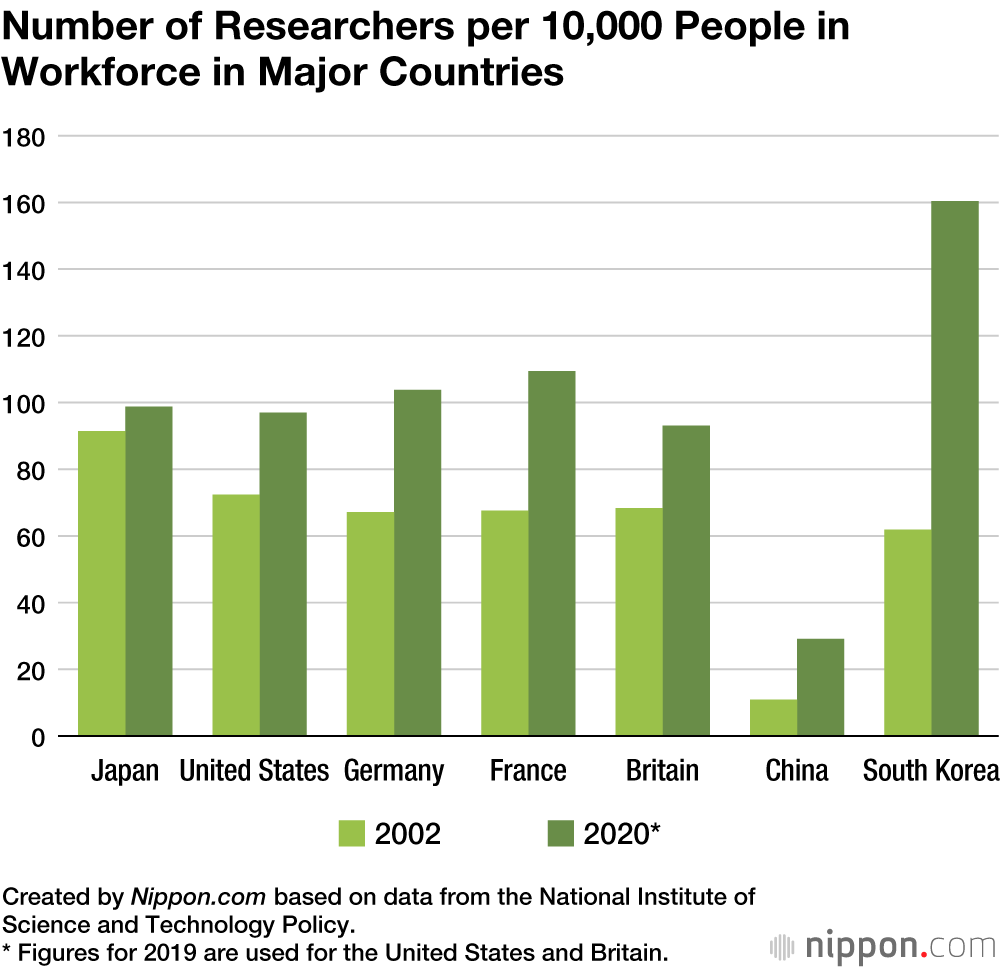
Japan’s Doctoral Degree Recipients on the Decline
Science- English
- 日本語
- 简体字
- 繁體字
- Français
- Español
- العربية
- Русский
According to the Japanese Science and Technology Indicators 2022, published by the National Institute of Science and Technology Policy (NISTEP), Japan ranked third among major countries for both R&D expenditure and number of researchers. However, Japan’s growth rate is smaller than other major countries and, after peaking in 2006, the number of doctoral degree recipients has been on the decline.
Science and technology indicators classify science and technology activities in five categories: R&D expenditure; R&D personnel; higher education and S&T personnel; R&D output; and science, technology, and innovation. Approximately 170 indicators are used to analyze the status of science and technology in Japan and other major countries. A main overview of these indicators is given in the table below.
Japan’s Trends in Key Indicators
| Indicators | Japan’s 2022 Ranking (2021) | |
|---|---|---|
| R&D expenditure | 3 (3) | ¥17.6 trillion |
| Businesses | 3 (3) | ¥13.9 trillion |
| Universities | 4 (4) | ¥2.1 trillion |
| Public organizations | 4 (4) | ¥1.5 trillion |
| Researchers | 3 (3) | 690,000 |
| Businesses | 3 (3) | 515,000 |
| Universities | 3 (3) | 136,000 |
| Public organizations | 3 (3) | 30,000 |
| Number of academic papers | 5 (4) | 68,000 |
| Number of adjusted top 10% papers | 12 (10) | 4000 |
| Number of adjusted top 1% papers | 10 (9) | 300 |
| Number of patent families | 1 (1) | 64,000 |
Created by Nippon.com based on data from the National Institute of Science and Technology Policy. The number of academic papers, the adjusted top 10% papers, and the adjusted top 1% papers are calculated using the fractional counting method.
Japan remained in top place globally for number of patent families (patent applications filed in two or more countries). Its share though was 26.0% on average for the period 2015 through 2017, a drop from the 29.9% it averaged in the mid-2000s.
No real change was seen in the number of papers published in Japan, causing it to fall in rank from fourth to fifth as publication had increased in other countries and regions. Ahead of Japan was China at the top, followed by the United States, Germany, and India. Japan also had a noticeable drop in the number of highly cited papers, ranking twelfth for adjusted top 10% papers (the number of papers in the top 10% of each research field by citation count, extracted and adjusted) and tenth for adjusted top 1% papers. China surpassed the United States for the first time for the number of adjusted top 1% papers to rank first globally.
The number of doctoral degree holders in Japan peaked at 17,860 in 2006 and has been on a downward trend since then, falling to 15,128 in 2019. In contrast, the number of doctoral degree holders in China and South Korea effectively doubled during that same period. In 2020, China had 65,585 and South Korea 16,139.
South Korea had the highest number of researchers per 10,000 people in the workforce among the major countries at 160.4 researchers. Japan ranked fourth with 98.8. During the early 2000s, Japan had been first for number of researchers. However, in the last 20 years, there has been a huge increase in the number of researchers per capita in other countries, leading to South Korea, France, and Germany all overtaking Japan.
(Translated from Japanese. Banner photo © Pixta.)

